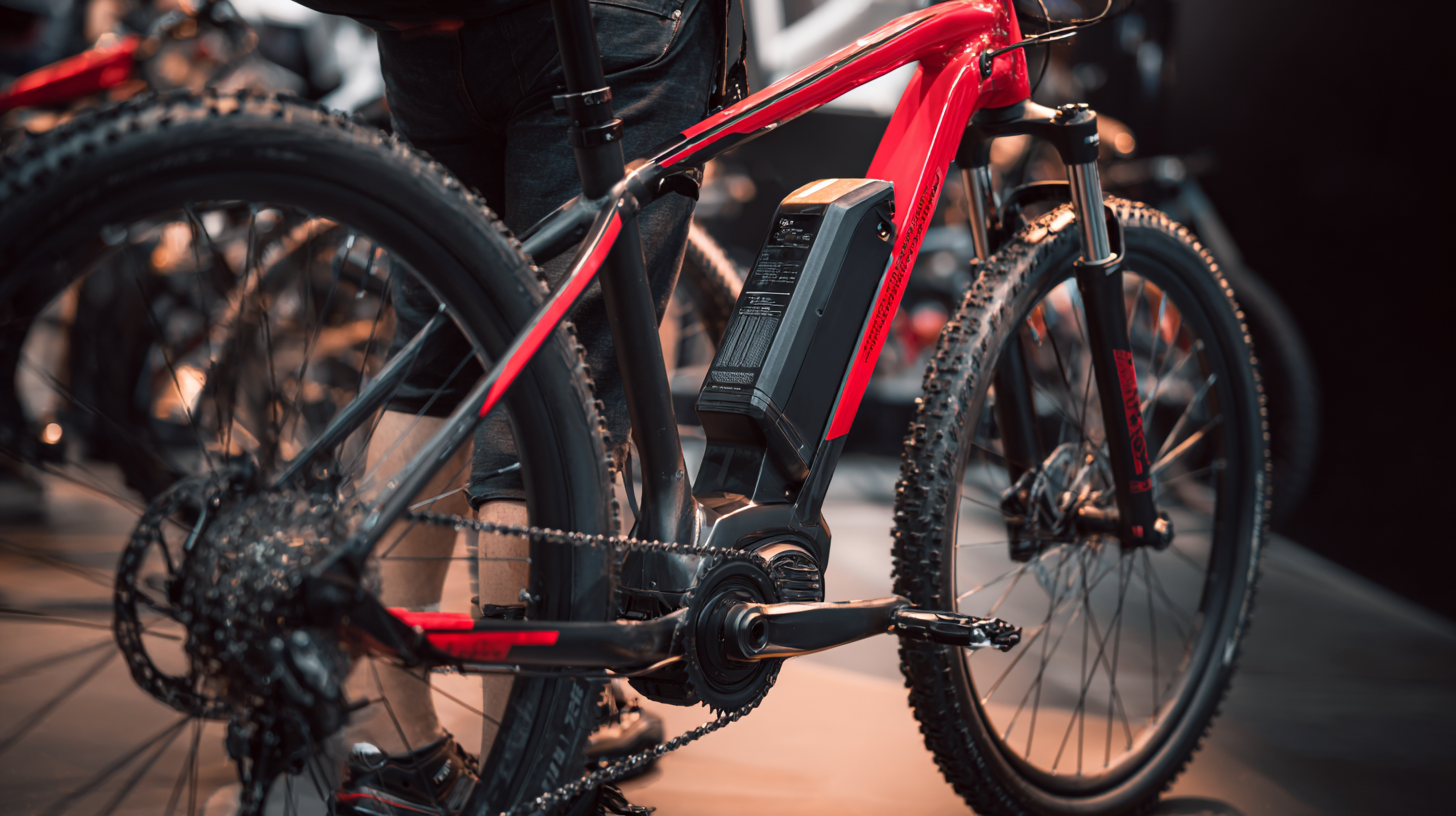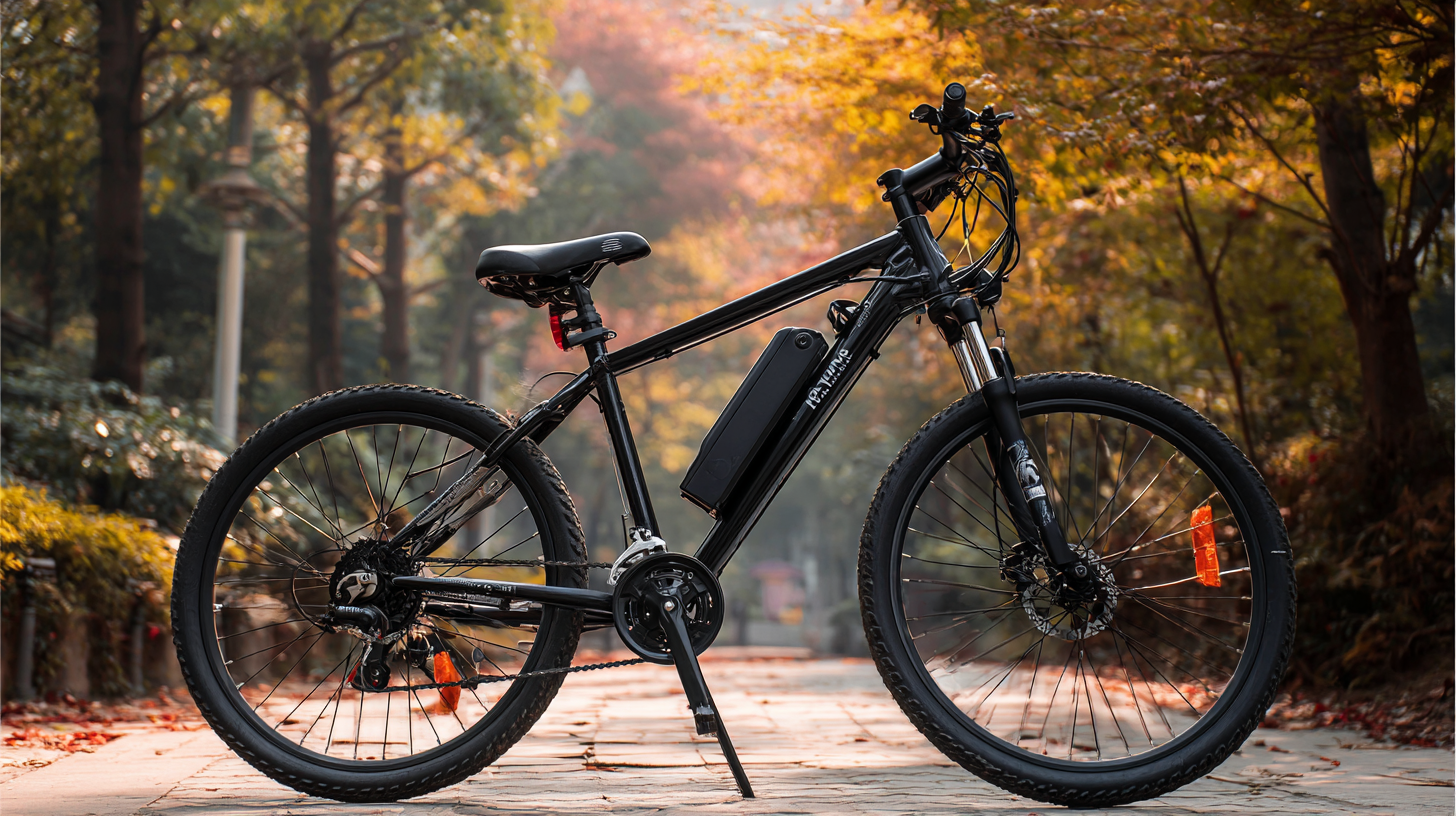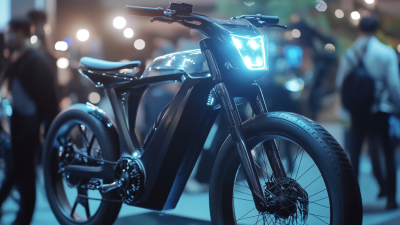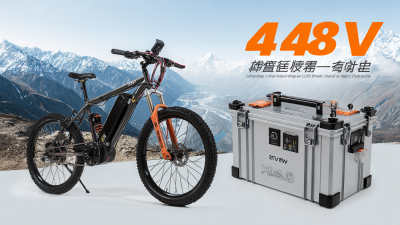As the popularity of electric biking continues to surge, the choice of an appropriate E Bike Li Ion Battery has become critical for cyclists seeking optimal performance and efficiency. According to a recent report by the Electric Bike Association, the e-bike market is projected to reach $24.3 billion by 2026, highlighting the increasing reliance on high-quality batteries to power these innovative vehicles. Choosing the right battery not only affects the bike's range and performance but also impacts the overall cycling experience. With various factors such as capacity, weight, and charging cycles to consider, making an informed decision can enhance the joy of cycling while ensuring your e-bike meets both daily commuting and recreational needs. Understanding these elements is essential in selecting a battery that aligns with individual cycling demands and lifestyle.

When selecting the right lithium-ion (Li-Ion) battery for your e-bike, it is essential to understand the different types available on the market. The most common types include Cylindrical, Prismatic, and Pouch cells. According to a report by ResearchAndMarkets, the global e-bike battery market is projected to grow significantly, driven by the increasing demand for high-performance batteries.
Cylindrical cells, noted for their durability and efficiency, are widely used in many e-bikes due to their thermal stability and cost-effectiveness.
Prismatic cells, on the other hand, offer a more energy-dense solution, often found in high-end models. Their flat design aids in optimizing space within the e-bike frame, allowing manufacturers to create sleeker models without sacrificing battery life. According to a study published by Grand View Research, prismatic cells accounted for approximately 40% of the market share in 2022, appealing to consumers looking for longevity and lightweight performance.
Lastly, Pouch cells, while less common, are favored for specific designs due to their flexible structure and ability to fit various battery configurations. Understanding these distinctions is crucial in making an informed decision that aligns with your cycling needs and style.
When selecting the ideal lithium-ion battery for your e-bike, it's essential to consider your cycling style and the battery capacity that complements it. The capacity, typically measured in watt-hours (Wh), dictates how far you can travel on a single charge. For commuters who ride short distances, a battery with a capacity of 400-500 Wh may suffice, providing ample power for daily trips without the need for frequent recharging. However, if you're an enthusiast planning longer rides or tackling hilly terrains, a higher capacity battery ranging from 600-800 Wh would be more suitable, ensuring you have enough energy reserves to complete your journey comfortably.

Another factor to consider is your cycling habits related to speed and assistance level. If you prefer a boost in speed and plan to use higher pedal assistance, the battery will deplete more quickly. Therefore, matching the battery capacity to your expected usage is crucial. For example, if you enjoy leisurely rides with minimal assistance, a smaller battery may fulfill your needs. Conversely, for adventurous riders who enjoy rapid acceleration and challenging routes, investing in a robust battery will enhance your overall experience, reducing worries about running out of power mid-ride.
When choosing the right lithium-ion battery for your e-bike, evaluating voltage and power output is crucial for optimal performance. The voltage of a battery significantly influences the speed and efficiency of your ride. Most e-bikes use batteries ranging from 24V to 48V; higher voltage typically results in quicker acceleration and better handling on steep terrains. A 36V battery is usually suitable for casual riding, while a 48V system is ideal for more intense applications like mountain biking or long-distance commutes.
Power output, measured in watt-hours (Wh), determines how long you can ride before needing a recharge. A higher watt-hour rating indicates a longer range, which is essential for both recreational cyclists and those who rely on their e-bikes for daily transport. For instance, a battery with 500Wh can provide appreciable distance, while a 250Wh battery might be sufficient for shorter trips. When selecting a battery, consider not only the voltage and watt-hours but also how they align with your cycling habits to enhance your overall performance.
This chart illustrates the relationship between voltage and power output of various lithium-ion batteries typically used in e-bikes. Higher voltage batteries generally provide better performance and efficiency for cyclists across different riding conditions.
 When selecting a lithium-ion battery for your e-bike, the weight and size are crucial factors that can significantly affect your overall cycling experience. A lighter battery can enhance maneuverability and reduce fatigue during longer rides, especially when tackling inclines. It’s essential to find a balance between battery capacity and weight; while larger batteries provide extended range, they can also add unnecessary bulk to your bike. For urban commuters, a compact, lightweight battery may be sufficient, allowing for easy handling and transportation.
When selecting a lithium-ion battery for your e-bike, the weight and size are crucial factors that can significantly affect your overall cycling experience. A lighter battery can enhance maneuverability and reduce fatigue during longer rides, especially when tackling inclines. It’s essential to find a balance between battery capacity and weight; while larger batteries provide extended range, they can also add unnecessary bulk to your bike. For urban commuters, a compact, lightweight battery may be sufficient, allowing for easy handling and transportation.
Size is equally important in ensuring that the battery fits well within your bike's frame. An ill-fitting battery can lead to handling issues or even damage to the bike during rides. Besides, consider how the battery's size may impact storage and charging options. If your e-bike needs to fit into tight spaces or requires a portable charging solution, opt for a battery that meets these practical requirements. Ultimately, understanding how weight and size influence your e-bike performance will ensure you choose the perfect battery that complements your cycling needs efficiently.
When selecting an e-bike, one of the crucial components to consider is the lithium-ion (Li-Ion) battery, particularly its lifespan and warranty options. The lifespan of a Li-Ion battery is typically measured in charge cycles, with most modern batteries lasting between 500 to 1000 cycles. Understanding how frequently you intend to ride your e-bike can help you gauge how long the battery will serve you effectively and if that aligns with your cycling habits. Look for batteries that offer a higher number of charge cycles, as this will ensure you get more value over time.
In addition to lifespan, the warranty offered by manufacturers serves as an essential assurance of quality and reliability. A robust warranty, ideally lasting between two to five years, not only reflects the manufacturer’s confidence in their product but also provides peace of mind for the buyer. When reviewing warranty options, check what aspects are covered, such as defects or capacity loss, and any conditions that might void coverage. A comprehensive warranty can save you from unexpected costs and enhance the long-term value of your e-bike investment.








